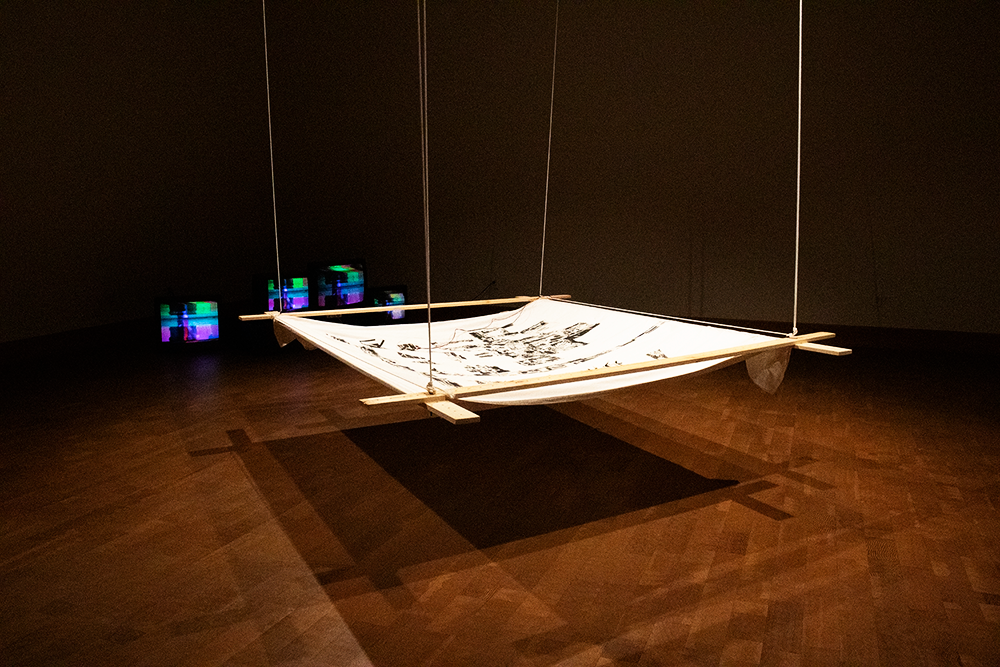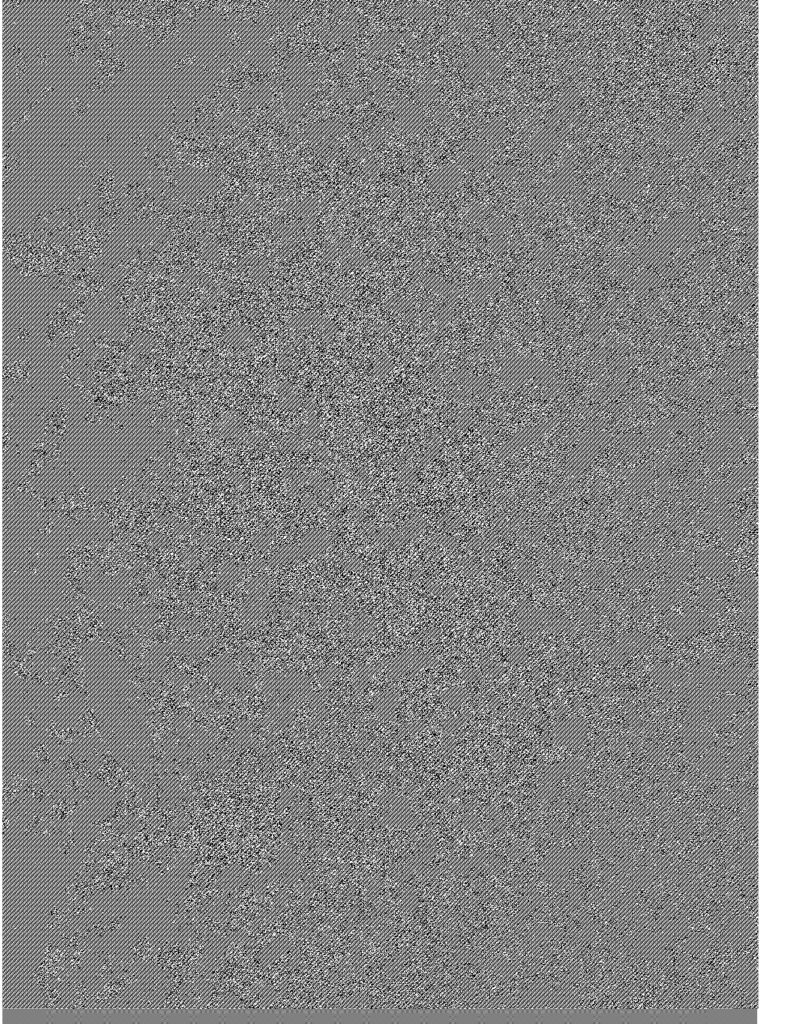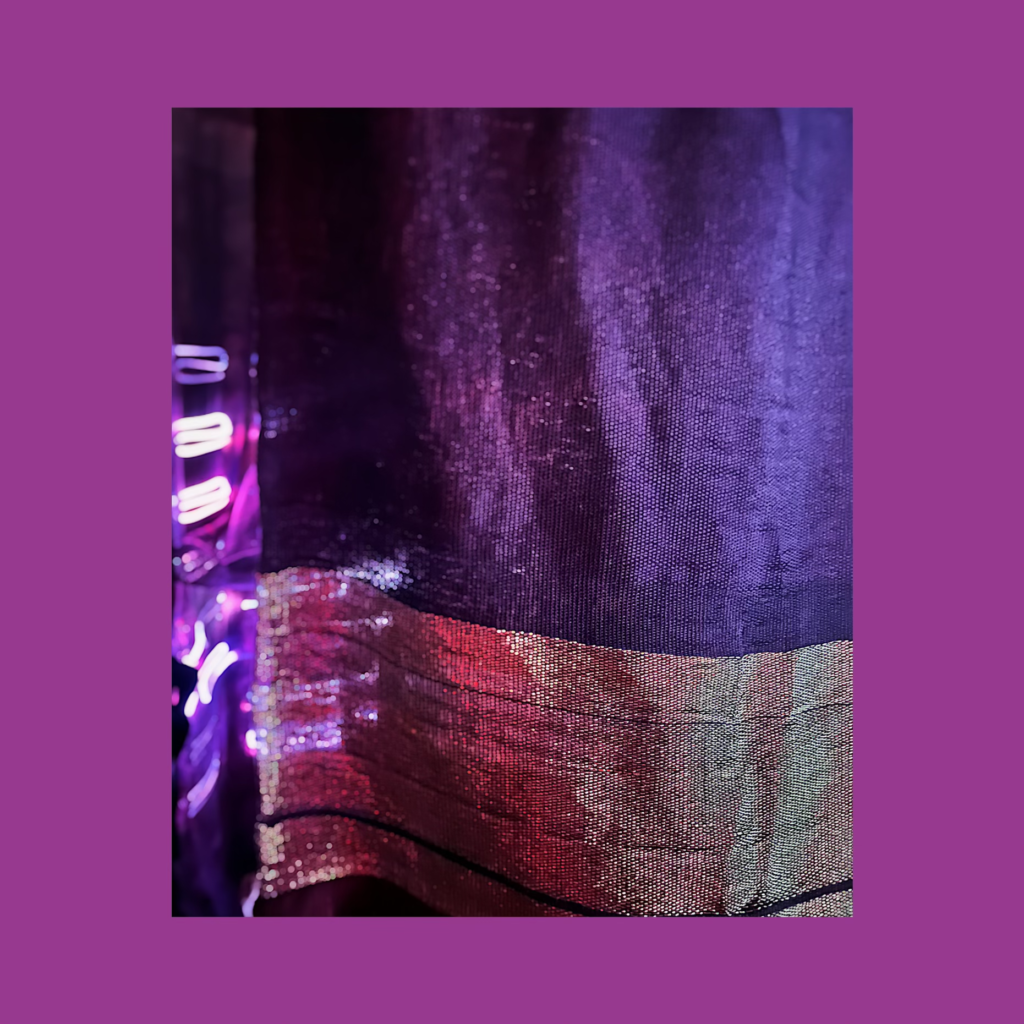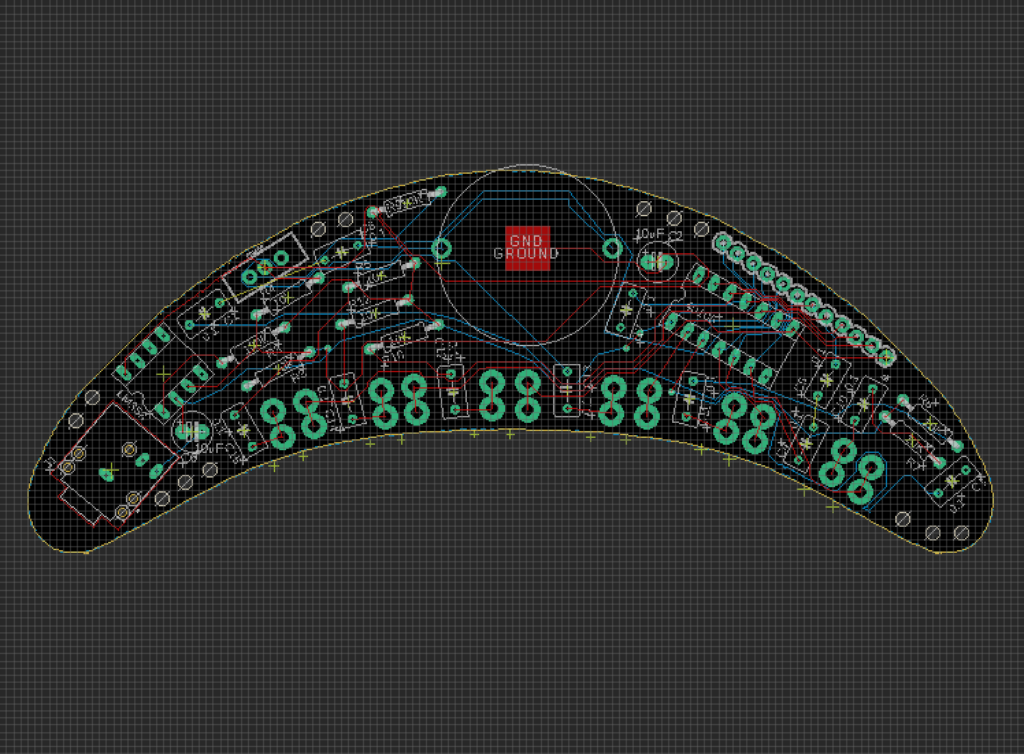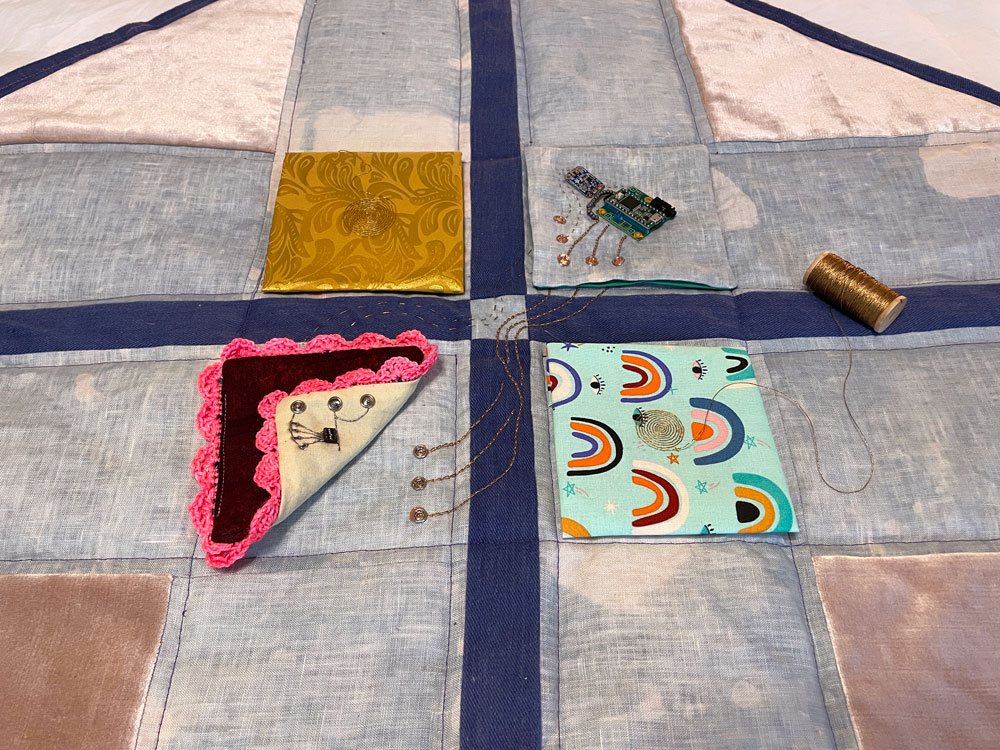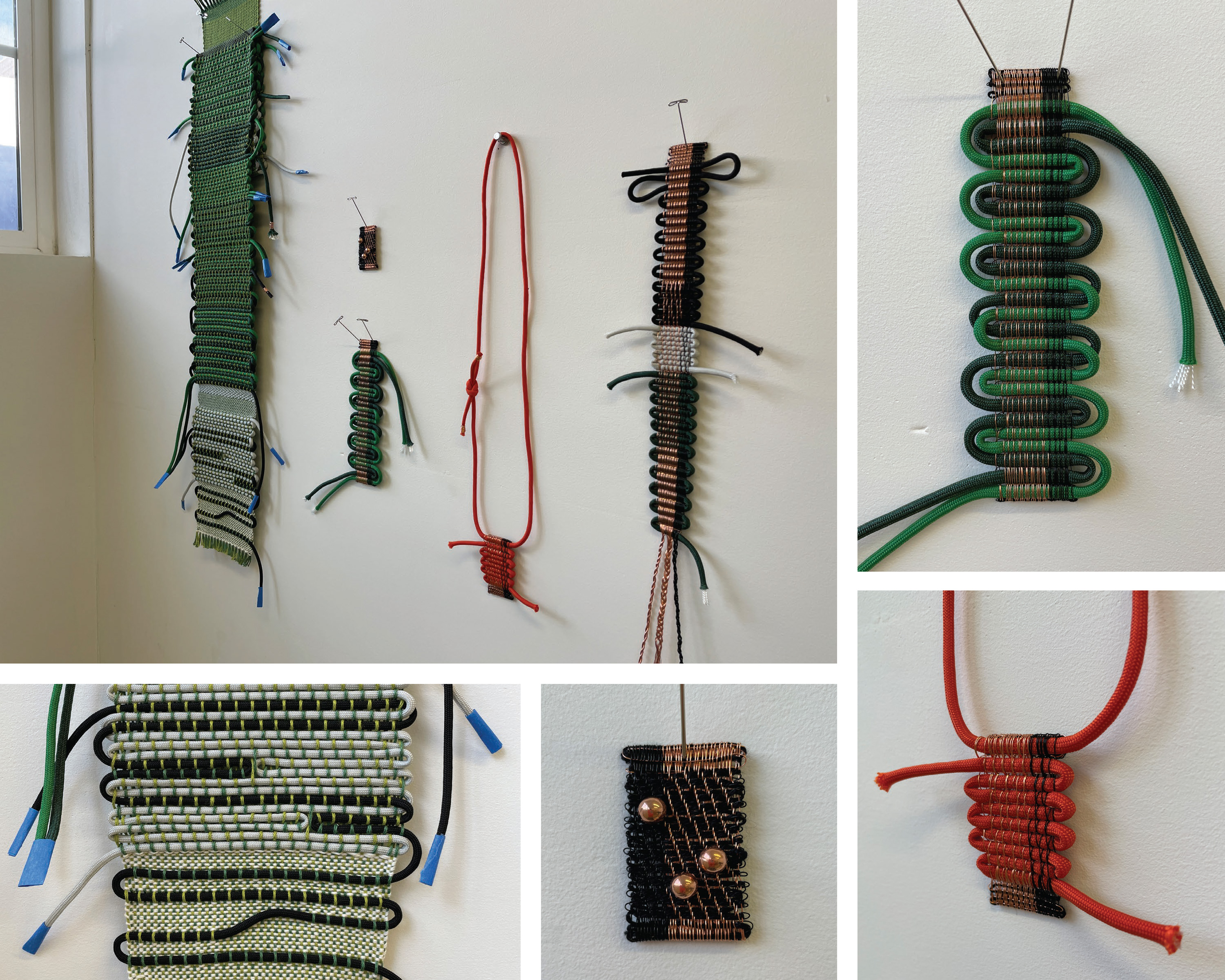Each year, eTextile Spring Break has an exhibit showing participants’ work. The exhibit has a couple of different purposes. One, it’s meant for participants to show and share work with each other, and two it’s for sharing with the public at the end of the week.
The work that participants bring can take many forms including a work in progress, experiments, or a complete piece. You can expect to see a range of objects that reflect the range of expertise the participants bring to the residency such as weaving, creative coding, and interactive electronics. The exhibit also provides an opportunity for participants to display what they have worked on during the week of eTextile Spring Break.
Showing at eTextile Spring Break, 2022
Halloween 1990 & Waterloo House 1992 by Janna Ahrndt
Dissecting, rearranging, and reworking shared signs and symbols- wires and electrons- is a gratifying way to dismantle systems that have been built to exclude and exploit. By first digitizing and then running these videos through an image recognition machine learning algorithm I have altered and changed them forever -making them more malleable causing me to question the nature of memory and remembering in a time before smartphones. In this work, the technology is serving both as a prosthetic for my own flawed memory as well as a means of distancing myself from the emotional task of self-archiving. Halloween1991& Waterloo House 1992 is a circuit bending and video mixing experiment where the quilt becomes a potentiometer allowing participants to glitch and warp my home videos.
Credits and acknowledgments: based off of Karl Klomp’s “Dirty Video Mixer” adapted to fabric
Cubicle by Bella Kiser
“Cubicle,” inspired by my own burnout and disillusionment with my 9-5 job and its lack of benefits and care for its workers, critiques American productivity culture. It recreates the feeling of entrapment when working for an immoral, capitalistic monopoly to survive. The piece contains hidden headphones and an MP3 player that loops Stimulus Progression Muzak, a form of music that was created to increase human productivity.
Credits and acknowledgments: Bella Kiser, Kenton Kiser – sound artist, Marisol Dorantes-Silva – photographer
Copper Circle: Inter-cultural Learning Experience by Joah Lui
Emerging out of three years of collaborative engagement with shíshálh Knowledge Carriers, Indigenous and settler artists, and youth, Copper Circle aims to use copper art, interactive media and tactile learning to center the stories and language of the shíshálh peoples. We explore ways of sharing and celebrating cultural knowledge and experiences while acknowledging the impact of colonialism, and the need to re-imagine the de-colonial present/future.
Credits and acknowledgments: Joah Lui, Manuela Salinas, Aliya Craigan, Meera Shah
The Maddening of Ophelia by Sasha de Koninck
In this work–an excerpt from a larger series– I am exploring the concept of madness by way of imagery (of lichens and other natural elements which grow over, and accumulate on a surface) coming in and out of focus. Woven on a digital jacquard loom, each weaving in the series is manually distorted during the weaving process.
Ancient Futures by Victoria Manganiello & Nicole Messier
‘Ancient Futures’ is a multi-layered woven textile whose surface visually fluctuates based on the sentiment analysis of visitors’ shared secrets. It is a participatory media installation capturing sonic textures and creating an evolving fabric of soundscape. Throughout history, technical methods in textiles have hidden and delivered sensitive details and encoded important messages. We are creating a modern precedent in this textile tradition to connect the past and future. As the piece travels, we will explore through making and workshop facilitation how this technology will be vintage, just as past techniques were novel yet are now common and nearly invisible.
Stitch Synth by Lara Grant
The Stitch Synth is an educational kit that incorporates basic electronics, noise, and embroidery. The kit is still in the process of being designed. For this exhibition, you will be able to play notes by touching embroidered designs on fabric and learn how to change the pitch of notes by swapping out electronic components. Play a melody or play all six soundwaves at once as they are mixed to create a phasing in and out soundscape. The circuit board is designed to be sewn onto a 6″ diameter embroidery hoop. However, for this exhibit, the final piece will most likely be embroidered on a larger scale.
Light Waves 2.0 by Linh My Truong
Light Waves 2.0 is an interactive tapestry of woven EL wire. Through textile capacitive sensors, the viewer can engage with the tapestry through touch, creating their own array of illuminated abstract forms.
Motherboard by Liza Stark
Motherboard is a quilt embedded with [moveable] textile speakers that allows a person to listen to specific memories by reconfiguring the structure of the patches. As part of an ongoing project, this specific prototype was built in response to losing a mother while becoming a mother and considers the question: What new forms of remembering can we find through novel interactions with electronics embedded into a quilt? It attempts to construct an alternative ritual for remembering that is grounded in the presence only a textile can offer. Each patch contains a textile speaker and one sonic detail that is activated when placed on the access point, knitting together the sounds of three generations.
Credits and acknowledgments: Liza Stark, Betsy Barton, Zelia Goldmark
Primus by Kate Hartman
For the world premiere of the new opera “R.U.R. Torrent of Light”, Social Body Lab collaborated with Tapestry Opera to create a series of wearable devices that were embedded into the costumes of performers and worn by musicians. The opera was created for the 100th anniversary of the original play “Rossum’s Universal Robots” by Karel Čapek. One of these devices, “Primus”, is an LED badge and collar that provides new forms of visual information within the narrative of the opera. It utilizes a networked microcontroller that receives data throughout the performance and displays animated lighting sequences for multiple characters simultaneously.
Credits and acknowledgments: Wearable Technology Design by Kate Hartman, Nick Puckett, Adam Tindale, Prayag Ichangimath, Sam Kingston in collaboration with Joanne Yu (Costume Design), Michelle Ramsay (Lighting Design), and Cameron Davis (Projection Design). Full credits for the production are available here.
Embodisuit by Sophia Brueckner
A collaboration with fashion designer Rachel Freire, the Embodisuit is a reaction to the increasingly popular Quantified Self trend, including devices such as the FitBit, which track your personal information for “self-improvement”. All of these technologies harvest data from the wearer and send it elsewhere. In contrast, the Embodisuit allows the wearer to receive and experience data they choose through physical sensations on the skin. The Embodisuit proposes a way to take back control of the configuration of our boundaries and the trajectory of our cyborg evolution.
Credits and acknowledgments: Sophia Brueckner and Rachel Freire
Solar Necklace by Kathleen McDermott
A necklace conceived and tested as an application for mini solar panels. The design consists of 60 mini solar panels sewn into neoprene and making contact with conductive nylon ribbon as a way to pass power through the garment to a charge controller, outputting 5V. Along the way, we tested many different methods for attaching the mini panels to fabric, including with conductive snaps, soldered wire, and copper tape, and documented our tests at idmwearables.club, with the goal of contributing to the DIY solar wearable space.
Credits and acknowledgments: Kathleen McDermott with Ash Tiwari
Woven Experiments by Ahree Lee
I have been experimenting with non-traditional materials in my weavings, most recently using materials more often found in industrial contexts: paracord and copper wire. I’m drawn to copper wire because it straddles the industrial and decorative as a material common to both electronics and jewelry. Similarly, paracord, a lightweight nylon rope originally used for parachute lines, has become popular among craft artisans in recent years. In these woven experiments, I follow in the spirit of Anni Albers and other Bauhaus Weaving Workshop weavers who relentlessly pushed the envelope exploring the functional and aesthetic capabilities of new materials.
A Ritual Transpondence by Bomani Oseni McClendon
“A Ritual Transpondence” is a multi-channel sound performance and installation invoking ritualistic techniques from Ifa spiritual practices. Computationally-composed chants of my living family members repeating the names of our deceased ancestors emanate mournfully from within handmade concrete sculptures representing a deity responsible for the transmission of prayers from earth to heaven. Transpondence makes reference to transponder devices, which receive signals and then transmit the signal with a different format or potency in response. This piece imagines a ritualistic transponder for ancestral veneration, which receives chants from my living family members and transmits them to a place where my deceased loved ones can hear them.
Revelations by STINA BAUDIN
In my piece, Revelations, I revisited and reclaimed the beauty found in Black culture. Both the sport of Basketball, and African hairstyles have gained popularity via Black representation. The traditional coils of hair wrapped to mimic water, reveal Black peoples indispensable role in the creation of popular culture.
